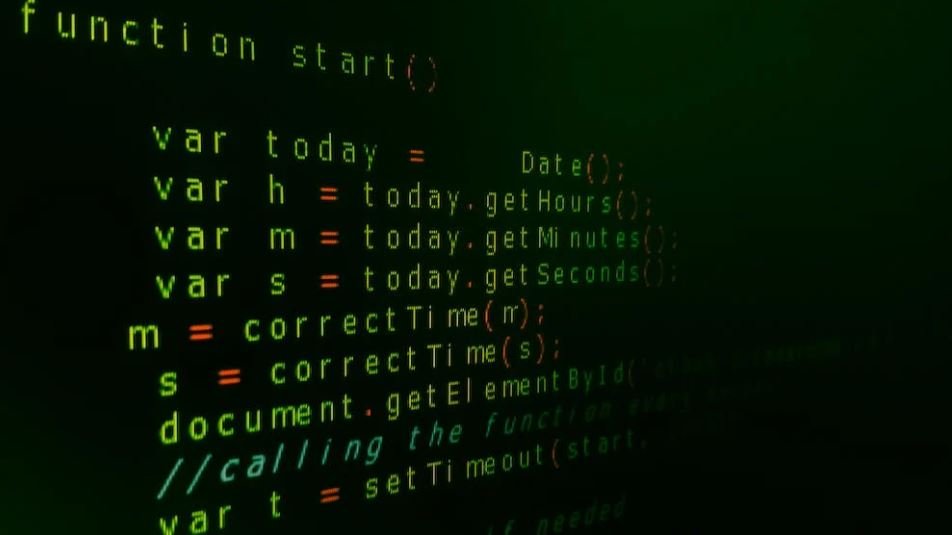Best Open Source AI
Artificial Intelligence (AI) is a rapidly growing field that has gained significant attention in recent years. It has the potential to transform various industries and improve our daily lives. Open source AI tools play a crucial role in this revolution by enabling developers and researchers to collaborate and build upon existing technologies. In this article, we will explore the best open source AI tools available, their features, and how they can be utilized in different applications.
Key Takeaways:
- Open source AI tools are essential for collaboration and innovation.
- These tools provide a range of functionalities, from machine learning to natural language processing.
- Each open source AI tool has its unique strengths and target applications, allowing users to find the best fit for their needs.
1. TensorFlow
TensorFlow is one of the most popular open source AI libraries for machine learning developed by Google. It offers a comprehensive ecosystem of tools, libraries, and community resources that facilitate the creation and deployment of AI models. With its intuitive interface and extensive documentation, TensorFlow is well-suited for beginners and advanced AI practitioners alike. Its powerful computational graph abstraction enables efficient training and deployment across a range of platforms and devices.
*TensorFlow is widely used by organizations such as Uber, Airbnb, and Twitter for various AI applications.
2. PyTorch
PyTorch is a popular open source AI library developed by Facebook’s AI Research lab. It gained popularity due to its dynamic neural network design, which allows easy model customization and experimentation. PyTorch provides a seamless transition from research to production with its production-ready tools and libraries. It also offers integration with popular Python libraries, making it an attractive choice for developers familiar with Python programming.
*PyTorch’s dynamic computational graph and intuitive interface make it a favorite among researchers and developers.
3. scikit-learn
scikit-learn is an open source machine learning library for Python that provides a simple and efficient toolset for data mining and analysis. It offers a wide range of supervised and unsupervised learning algorithms, making it suitable for tasks such as classification, regression, and clustering. scikit-learn also provides comprehensive documentation and educational resources, making it an excellent choice for beginners to learn machine learning concepts.
*scikit-learn is widely used in academia and industry for its simplicity and effectiveness in implementing machine learning algorithms.
Data Visualization Comparison
| Library | Features | Usability |
|---|---|---|
| Matplotlib | Comprehensive | Beginner-friendly |
| Seaborn | Statistical visualization | Elegant aesthetics |
| Plotly | Interactive visualizations | Web integration |
When it comes to data visualization, different libraries offer various features and usability. Matplotlib is a comprehensive library that provides extensive plotting capabilities and is well-suited for beginners. Seaborn, on the other hand, focuses on statistical visualization and produces aesthetically pleasing plots. Plotly specializes in interactive visualizations and offers seamless integration with the web, making it suitable for online applications.
4. Apache Spark
Apache Spark is an open source distributed computing system designed for big data processing and analytics. It provides a unified platform for batch processing, streaming, machine learning, and graph processing. Spark’s ability to handle large-scale data and its efficient memory management make it a go-to choice for big data processing. With its easy-to-use APIs, programming in Spark becomes straightforward, even for complex data manipulation tasks.
*Apache Spark’s ability to process big data and its versatility make it a popular choice for organizations dealing with large-scale data.
Sentiment Analysis Comparison
| Library | Accuracy | Speed |
|---|---|---|
| NLTK | High | Medium |
| VADER | High | Fast |
| TextBlob | Moderate | Fast |
When performing sentiment analysis, choosing the right library is crucial. NLTK offers high accuracy but has a moderate processing speed. VADER, on the other hand, provides high accuracy and fast processing speed, making it suitable for real-time applications. TextBlob offers moderate accuracy but excels in speed, making it a good choice for applications prioritizing efficiency.
5. Keras
Keras is an open source neural network library written in Python, which provides a user-friendly and modular approach to building AI models. It offers a range of pre-built layers and models and supports both convolutional and recurrent neural networks. Keras also provides an abstraction over popular deep learning frameworks like TensorFlow and Theano, allowing users to easily switch between backends without modifying their code.
*Keras’s simplicity and flexibility make it a popular choice for rapid prototyping and experimentation in the field of deep learning.
Conclusion
Open source AI tools have revolutionized the field of artificial intelligence by providing a collaborative and accessible platform for developers and researchers. TensorFlow, PyTorch, scikit-learn, Apache Spark, and Keras are among the best open source AI tools available, each offering unique features and strengths suitable for a wide range of applications. When choosing an open source AI tool, consider your specific requirements and the target application to find the best fit for your needs.

Common Misconceptions
1. Open source AI lacks quality and performance
One common misconception about open source AI is that it lacks the quality and performance that proprietary AI solutions offer. However, this is not necessarily true. While it is true that some open source AI projects may not have been extensively tested or optimized, there are also many high-quality open source AI projects available that have been developed by skilled and dedicated contributors.
- Open source AI projects often undergo rigorous testing and peer review.
- Many open source AI projects are created and supported by reputable organizations and communities.
- Open source AI allows for continuous improvement and community-driven enhancements.
2. Open source AI is only for experts
Another misconception is that open source AI is reserved for experts or experienced programmers. While it is true that implementing and customizing open source AI solutions may require some technical knowledge, there are also many user-friendly tools and libraries available that make it more accessible to a wider audience.
- Open source AI projects often have extensive documentation and tutorials for beginners.
- There are user-friendly graphical interfaces and drag-and-drop tools available for working with open source AI.
- Online communities and forums provide support and assistance for users of all levels of expertise.
3. Open source AI is not as secure as proprietary AI
Some people believe that open source AI is less secure compared to proprietary AI, mainly due to concerns about the transparency of the code and potential vulnerabilities. However, open source AI projects can actually benefit from increased security and reliability through the power of collaboration and community-driven scrutiny.
- The openness of the code allows security experts to review and identify vulnerabilities more effectively.
- Many open source AI projects have active security teams and respond quickly to reported issues.
- The transparency of open source AI fosters accountability and helps ensure the software is trustworthy.
4. Open source AI lacks support and maintenance
Another misconception is that open source AI projects lack proper support and maintenance. While it is true that open source projects rely on community contributions, many widely-used open source AI projects have dedicated teams and organizations behind them to ensure ongoing support and maintenance.
- Popular open source AI projects often have active and engaged developer communities.
- Commercial entities frequently provide support and consulting services for open source AI projects.
- Bug fixes, updates, and new features are regularly released for well-maintained open source AI projects.
5. Open source AI is not suitable for large-scale deployments
There is a misconception that open source AI is not suitable for large-scale deployments and that proprietary solutions are better equipped to handle complex and demanding applications. However, many open source AI projects have been successfully deployed in large-scale environments, offering robust and scalable solutions.
- Open source AI projects can be tailored and customized to meet specific scalability and performance requirements.
- Well-established open source AI frameworks often have extensive resources and tools for managing large-scale deployments.
- Several high-profile organizations use open source AI for their large-scale applications, proving its suitability.

Best Open Source AI
Artificial intelligence (AI) has become an integral part of various industries, revolutionizing the way we interact with technology. Open source AI projects have played a significant role in advancing these technological developments by encouraging collaboration and fostering innovation. In this article, we will explore ten exceptional open source AI projects that have made a substantial impact on the field.
1. TensorFlow
TensorFlow is a widely-used open source machine learning library developed by Google. It provides a flexible framework for building and deploying AI models, making it a popular choice among developers worldwide. As of 2021, TensorFlow has over 160,000 GitHub stars and a thriving community, contributing to its constant growth and improvement.
2. PyTorch
PyTorch, developed by Facebook’s AI Research Lab, is another prominent open source library extensively used for deep learning applications. With its intuitive and dynamic approach, PyTorch has gained popularity within the research community. It boasts an impressive adoption rate, with many researchers and industry professionals utilizing it for their AI projects.
3. Scikit-learn
Scikit-learn is a versatile open source machine learning library built on top of NumPy, SciPy, and matplotlib. It offers a plethora of algorithms and tools for various tasks such as classification, regression, and clustering. Its simplicity and efficiency have contributed to its widespread use in academia and industry.
4. Keras
Keras is a user-friendly open source neural network library widely utilized for deep learning applications. Keras provides a high-level API, making it accessible for beginners while still enabling advanced customization options. With its focus on extensibility and modularity, Keras has gained recognition as an essential tool for building AI models.
5. Theano
Theano is a foundational open source library for deep learning, allowing efficient computation on GPUs and CPUs. It was developed by the Montreal Institute for Learning Algorithms (MILA) and has served as the basis for many subsequent libraries. Although not as actively maintained today, Theano’s legacy and contributions to the field make it noteworthy.
6. Apache MXNet
Apache MXNet is a scalable and flexible open source deep learning framework known for its efficiency and support for multiple programming languages. It offers a high-level interface for easy model development and a low-level interface for fine-grained control. MXNet has gained prominence due to its performance, especially in the field of computer vision.
7. Caffe
Caffe is an open source deep learning framework developed primarily for vision-related tasks. With its expressive architecture and focus on speed and efficiency, Caffe has become a preferred choice for computer vision researchers. Its rich ecosystem of pre-trained models and easy integration with other libraries make it highly appealing.
8. H2O.ai
H2O.ai is an open source machine learning platform that supports a wide range of AI applications, including data analysis, modeling, and deployment. It offers a user-friendly interface with seamless integration capabilities, making it advantageous for both beginners and experts. H2O.ai’s active community and dedicated support further contribute to its popularity.
9. Microsoft Cognitive Toolkit (CNTK)
The Microsoft Cognitive Toolkit (CNTK) is an efficient open source deep learning library developed by Microsoft Research. Renowned for its speed and scalability, CNTK excels in distributed training scenarios. With its extensive set of tools and support for various platforms, CNTK has gained recognition as a powerful framework for building AI systems.
10. OpenAI Gym
OpenAI Gym is an open source library that facilitates benchmarking and comparing the performance of various reinforcement learning algorithms. It provides a collection of environments for training and testing AI agents, allowing researchers to evaluate their models’ proficiency. OpenAI Gym‘s contribution to reinforcement learning research and its vibrant community make it an integral part of the AI ecosystem.
These ten open source AI projects represent a fraction of the remarkable developments within the field. The collaborative and community-driven nature of open source has propelled AI advancements, enabling democratized access to cutting-edge technologies. As AI continues to evolve, these projects and their communities will undoubtedly shape the future of artificial intelligence.
Frequently Asked Questions
Q: What is open source AI?
Open source AI refers to artificial intelligence software that is released under an open source license. This means that the source code of the AI software is made freely available to the public, allowing anyone to use, modify, and distribute it without any restrictions.
Q: What are the advantages of open source AI?
Open source AI offers several advantages. It allows developers to collaborate and contribute to the improvement of the AI software, leading to faster development and innovation. It also promotes transparency and helps build trust in AI systems by allowing users to inspect the source code. Additionally, open source AI often comes with a vibrant community that provides support and shares knowledge.
Q: What are some popular open source AI frameworks and libraries?
Some popular open source AI frameworks and libraries include TensorFlow, PyTorch, Keras, scikit-learn, Apache MXNet, and Caffe. These frameworks provide a range of tools and resources for building and deploying AI models.
Q: Can I use open source AI for commercial purposes?
Yes, you can use open source AI for commercial purposes. The open source license allows you to use the software for any purpose, including commercial use. However, it is important to consider any licensing requirements and obligations that may be associated with the specific open source AI software you are using.
Q: How can I contribute to open source AI projects?
There are several ways to contribute to open source AI projects. You can start by reporting bugs, suggesting improvements, or providing feedback to the project maintainers. If you have coding skills, you can contribute by submitting code patches or implementing new features. You can also contribute by creating documentation, writing tutorials, or helping others in the community.
Q: Are there any limitations to using open source AI?
While open source AI offers many advantages, there are some limitations to consider. Open source AI software may have a learning curve, requiring some technical expertise to use effectively. Additionally, the quality and stability of open source AI projects can vary, so it is important to thoroughly evaluate and test the software before deploying it in critical applications.
Q: Can I modify and customize open source AI software?
Yes, you can modify and customize open source AI software as per the open source license terms. The flexibility of open source allows you to modify the source code to suit your specific requirements. However, it is crucial to understand and comply with the licensing requirements, including the distribution of any modifications or enhancements you make.
Q: How do I choose the best open source AI framework for my project?
Choosing the best open source AI framework depends on various factors, including your project goals, programming language preference, community support, ease of use, and available resources. Consider factors like the frameworks’ documentation, community activity, performance benchmarks, and compatibility with your existing infrastructure to make an informed decision.
Q: Can I use open source AI for real-world applications?
Absolutely! Open source AI frameworks are widely used for real-world applications across various industries, including healthcare, finance, retail, and more. Many successful AI-powered products and services are built using open source AI. However, it is important to carefully design, train, and test your AI models to ensure they meet the specific requirements and ethical considerations of your application.
Q: Are there any legal considerations when using open source AI?
When using open source AI, it is important to be aware of the legal considerations, including the specific licensing terms of the open source software you are using. Some licenses may have specific requirements, such as providing attribution or releasing any modifications under the same license. It is advisable to consult legal professionals familiar with open source licensing to ensure compliance.




